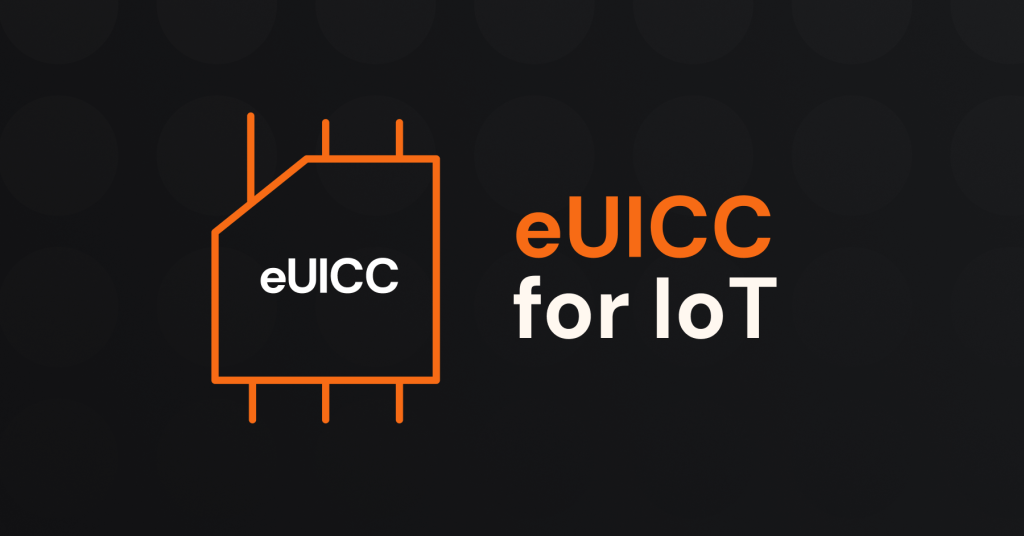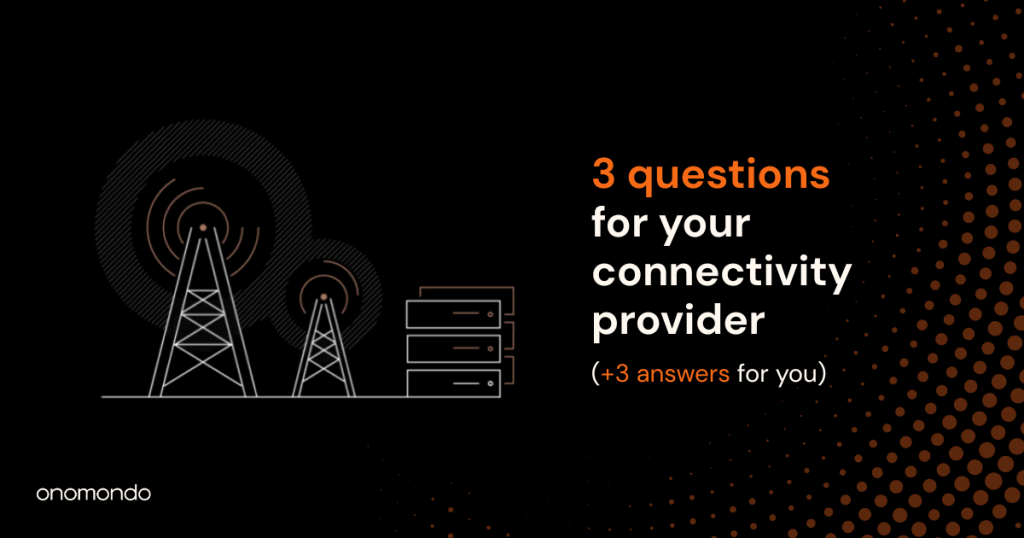For global IoT deployments, future-proofed connectivity needs to be a significant part of the planning process.
The traditional telecom home vs visited network (aka roaming) setup is not fit-for-purpose.
Projects will fail when devices can’t connect to the visited network after being outside of their home network too long. And this is exactly what happens when visited networks decide devices are “Permanently roaming” and disconnect them from their network.
At Onomondo, we want a world where IoT devices are connected regardless of where they go over their lifetime. Even better, IoT solutions need global connectivity baked in during manufacturing.
However there are still significant limitations to “permanently roaming” devices due to a lack of clarity and regulations regarding IoT connectivity.
Table of Contents
The limitations of traditional connectivity
Unfortunately, traditional telecommunication systems were not designed to support IoT, and the consequences of this can be felt in several areas.
From regulations to business practices, down to the options most connectivity providers offer to their customers, the market is generally geared towards mobile devices like smartphones and tablets — not IoT projects. As you can probably guess — or may have even experienced yourself — the needs of smartphone users are vastly different than those of IoT solutions.
Under current practices and regulatory requirements, a SIM card can typically remain outside of its home network for 30 to 45 days before being classed as “permanently roaming” and being required to “return home”.

If the SIM does not return home, then it will lose its ability to connect to the visited (aka roaming or foreign) network, leaving the device — and more importantly, the device’s owner — without a long-term roaming solution.
Roaming is intended for travel, not IoT
The reason that roaming contracts only work for short stretches of time is that they are intended for devices traveling to — and returning from — different countries, not devices being deployed across borders permanently.
Roaming services were meant to be for people on vacation, individuals taking business trips, and so on.
Even if someone did happen to stay in a foreign location past the e.g. 45-day mark, they have the option to purchase a local SIM, pop it in their phone and use it for the duration of their trip.
That solution doesn’t translate to IoT devices. They are often produced in one country and often end up in another, with no plans of returning to their starting point. How and where should the device manufacturer test the device? How can they avoid the pain of needing to forecast exactly where every device will go?
Switching out devices’ SIMs every time they go to a new location is impractical, and normally impossible.
The challenges of global IoT connectivity
Global IoT deployments need to take the following roaming challenges into account.
Challenge 1: Regulatory prohibition
A 2017 report by the International Telecommunication Union (ITU) outlining the international roaming guidelines for mobile devices highlights the need for new regulatory solutions for “Internet-of-things (IoT) and machine-to-machine (M2M) communications”.
The ITU relies on national guidelines to define the boundaries and conditions for roaming IoT devices — which, as you would expect, has resulted in conflicting and complicated laws across the world.
In Brazil and Turkey, for example, permanent roaming is completely off-limits to international providers. Some operators in Australia and the United States have permanent roaming restrictions. In the EU, regulations were passed that restricted providers from charging roaming fees for devices within the EU — assuming that the data usage is within reason — so long as the device spends the majority of any four-month period within their home network.
The result is a lot of confusion and difficulty for IoT projects in need of permanent, global connectivity.
Challenge 2: Planning for global connectivity
Devices are often permanently deployed across international borders (e.g. IoT for smart buildings, manufacturing, Retail IoT) or travel from country to country indefinitely from day one (Maersk integrated logistics is a good example for truly mobile and global IoT). In these scenarios, it’s obvious that you’ll need to plan global connectivity from the outset.
Unfortunately, it’s all too common that people don’t realise the complications that can arise from relying on a local operator pre-deployment. If you don’t check the limitations of a potential provider’s roaming capabilities early on, it can have serious consequences for the longevity of your project. Changing track is often not easy post-PoC (proof of concept).
Additionally, if you opt to make agreements with local connectivity providers as your solution expands into new countries, it would decentralize connectivity. This makes it much more difficult to manage the project as a whole and utilize the combined traffic volume to obtain a better deal.
Challenge 3: Minimal access to deployed devices
Thirdly, a lack of access to the IoT devices after they have been deployed means swapping SIMs if devices get disconnected or adapting to commercial or technological change is very tricky.
Changing SIMs to a new provider is generally not possible. Your devices could be in remote or extreme areas that are difficult, time-consuming, and costly to reach. In other cases, devices may be sold to customers, leaving you with limited options to update devices. The only way to do so would be to go to each customer directly and require devices to either be replaced or amended on site.
Aside from being a logistical challenge, it also has the potential to be a PR nightmare, especially if the IoT product is in the hands of a broad customer base.

The limited amount of access to IoT devices after deployment means that changing SIM cards and providers on the go is a difficult — if not impossible — undertaking. But it’s understandably tricky to plan for the entire lifespan of your device while markets and technology evolve so quickly.
Permanent roaming solutions
Not all IoT projects require global connectivity, and in these cases, making contracts with local providers will more than likely meet your needs. However, for IoT projects that are looking to scale globally, there are alternatives.
Global Connectivity with Onomondo
Onomondo is a global cellular IoT connectivity provider and software provider that offers permanent roaming in almost all countries as a standard service.
Due to our unique IoT architecture, we can offer permanent global connectivity using a simple UICC SIM (2FF, 3FF, 4FF, MFF2) with one profile and one global APN.
We can avoid permanent roaming issues because we’ve built full core network integrations with every single radio access network (RAN) in our 630+ network. So there’s no need to use power hungry profile switching mechanisms on eUICC SIMs (aka eSIM).
We also offer the world’s first agnostic software SIM, or simply SoftSIM. The SoftSIM allows for seamless global connectivity without depending on slow and costly physical SIM distribution. You can learn more about how SoftSIM works here.
However, if you are really set on using eUICC architecture on SIMs, Onomondo’s global profile also works seamlessly on eUICC (more on this technology below).
Being an MVNO (Mobile Virtual Network Operator), we don’t have one RAN that’s “home”, which is typical for MNOs. We’ve integrated all RANs with the Onomondo Core Network. If you use an Onomondo SIM in the US with T-Mobile base stations, China with China Unicom base stations, or Denmark with TDC base stations, everything is handled the same way. We call this network agnostic.

Having one network means, among other things, that you don’t have to worry about putting different SIMs in your devices and forecasting regional usage. And on top of that supply-chain simplicity, you also have deep insights for troubleshooting all devices – globally and in real-time.
eUICC (eSIM)
Another fix for the permanent roaming issue is to choose an eUICC (aka eSIM) solution that lets you add multiple provider profiles to a SIM.
This can help you avoid the problem of permanent roaming in two ways:
- You have a local profile for countries where permanent roaming is restricted. Once entering e.g. Brazil, your SIM can switch to a local operator in that country and not be classed as “permanently roaming”.
- You could switch between multiple roaming profiles in countries that restrict permanent roaming. Switching every 90, 45, etc. days in a year between roaming profiles in a visited country would avoid permanent roaming restrictions. This, however, would be acting in bad faith.
However, it’s important to be aware that eUICC SIMs come with technical and commercial lock-ins.
The eUICC platform is hardcoded on to SIMs, meaning you can’t switch your eSIM platform provider. This risk of vendor lock-in means that there is still a certain amount of pressure to pick the right provider the first time, adding to the challenge and complexity of launching an IoT project.
Unlicensed LPWAN standards
Unlicensed low power wide area (LPWA) networks such as LoRa or SigFox offer networks that are low frequency and low power. They’re designed to send small packages of data across long distances without using up too much power, which is the goal of most IoT projects.
LoRaWAN, for example, wouldn’t be subject to national regulations as long as the spectrum is open and free. Here, roaming is merely a technical agreement between the parties involved. But whether the spectrum is open and free differs; the EU is quite aligned, while the United States and Aisa have their own specifications, and some countries don’t have LoRaWAN at all.
Someone looking to use their LPWAN technologies for their IoT project would need to conduct a substantial amount of independent research on the subject and providers before making a final decision.
Some of the limitations of unlicensed LPWAN include bandwidth restrictions due to unlicensed frequencies and the need to develop your own infrastructure. Because unlicensed LPWAN is still mostly untapped, IoT projects that choose to rely on it end up committing to large-scale development projects in order to make it work, or simply keep their IoT projects on the smaller side to minimize the resource investment.
Choosing LTE-M or NB-IoT LPWAN technologies instead of unlicensed alternatives is an increasingly popular way to get the benefits of LPWAN on licensed networks. However, they come with the same permanent roaming restrictions as other licensed cellular technologies.
End-user sourced connectivity
Lastly, if you are a manufacturer of IoT devices and components, you could let end-customers manually choose their cellular connectivity provider.
The issues with this, though, are pretty clear. For one thing, it makes setting up your device more difficult and costly for your customers. It also segregates the overall experience of your product from a consumer’s point of view.
With the product coming from one company and the connectivity provided from another, the relationship your customer has with the device is shared with the connectivity provider they choose and might also complicate other processes like support and security, effectively adding connectivity associated costs elsewhere in the organisation.

Not to mention that if keeping a device connected is not seen as a necessity to the end user, you could end up with a large portion of products never being connected to begin with.
Conclusion
Keeping your devices connected across the world throughout the entire device lifetime doesn’t have to be a struggle if properly planned for. The ideal choice for most global IoT projects is to choose a global connectivity provider, one that offers permanent roaming with a business model that is linked to the value generation of the IoT solution.
Despite a lack of standardized regulation for IoT roaming, global providers like Onomondo are working to offer solutions that bridge the gap between traditional connectivity and the needs of IoT projects.







